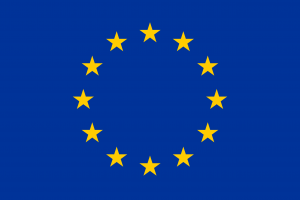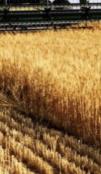Agriculture & Food Security

Launched in 1962, the EU’s Common Agricultural Policy (CAP) is a partnership between agriculture and society and between Europe and its farmers. Its main aims are to improve agricultural productivity, so that consumers have a stable supply of affordable food and to ensure that EU farmers can make a reasonable living.
The CAP is a common policy for all EU Member States. It is managed and funded at the European level from the resources of the EU annual budget. Now, 50 years later, the EU has to address more challenges. Firstly, food security: at the global level, food production will have to double in order to feed an estimated world population of 9 billion people in 2050. Other challenges are climate change and the sustainable management of natural resources, looking after the countryside across the EU, and keeping the rural economy alive.
To consolidate the role of European agriculture for the future, the CAP has evolved over the years to meet changing economic circumstances and citizens’ requirements and needs.
The most recent reforms, in 2013, shifted the focus towards greener farming practices, research, and the spread of knowledge, a fairer support system for farmers and a stronger position for farmers in the food chain. Known as the “second pillar” of the Common Agricultural Policy, the EU's Rural Development Policy has changed over time in order to adjust to the evolving key EU priorities, and for the period 2014-2020 has been revised in line with the wider CAP reform. Its emphasis on investing for success has enabled many farmers to learn new techniques, upgrade facilities, and carry out essential restructuring, thus sharpening their competitive edge.
The CAP 2023-27 entered into force on 1 January 2023. Support for farmers and rural stakeholders across the 27 EU countries is based on the CAP 2023-27 legal framework and the choices detailed in the CAP Strategic Plans, approved by the Commission. The approved Plans are designed to make a significant contribution to the ambitions of the European Green Deal, Farm to Fork Strategy and Biodiversity Strategy.
Today, the rural economy faces significant challenges relating to food safety, climate change, growth and jobs in rural areas. Within the EU, rural development plays a key part in achieving the overall objective of promoting smart, sustainable and inclusive growth in rural communities.
Agriculture in Türkiye
The share of agriculture in Türkiye's gross domestic product (GDP) is 6% (2022), representing 17.7% (2021) of the labour force. Agricultural lands (excluding meadows and pastures) comprise approximately 23.14 million ha of the overall 78 million ha total territory. The average size of agricultural holdings in Türkiye is smaller than those in the EU.
Subsistence and semi-subsistence farming is an important characteristic of Turkish agriculture. These farms are typically characterised by low productivity of the factors of production and only a small fraction of production being marketed.
Türkiye is a significant agricultural exporter, and its main trading partners are the EU Member States.
Geographical Indications
EU quality policy aims to protect the names of specific products to promote their unique characteristics, linked to their geographical origin as well as traditional know-how. Geographical indications (GI) establish intellectual property rights for specific products, whose qualities are specifically linked to the area of production.
Türkiye has 9 GI registered products in the EU, whereas the EU has 8 registered GIs products in Türkiye”.
Links of interest:
Agriculture and rural development, including the Common Agricultural Policy



